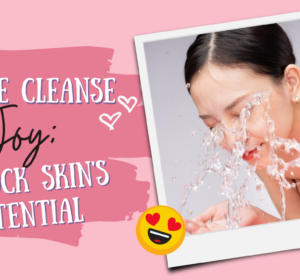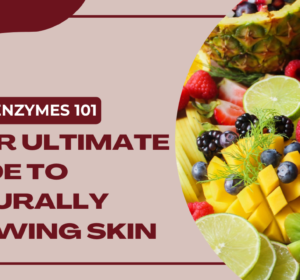As we approach summer, we start to see in shops lots of sunscreens, after-sun creams, self-tanners and other summer products. Most of us love to have nice golden tanned skin but we all know about the dangers of sun exposure. However, there is an easy solution to get the desired tan – the use of a self-tanner. In this post, I am going to tell you how self-tanners work, how to use them and all you need to know about them.

What is a self-tanner?
Self-tanners are cosmetic products with the ability to give skin colour similar to tanned skin. In other words, a self-tanner is a product which produces a fake tan colour on your skin.
The use of self-tanners does not involve sun exposure and, therefore, they are not going to produce sunburns or other sun damage to the skin.
They were first used by people with sensitive skin or very fair skin who could not expose to any solar radiation. Nowadays, because we are concerned about the damage sun radiation can cause to our skin, body and health especially UV-A and UV-B radiation, self-tanners are becoming popular and they are an alternative to sun exposure for so many people.
Tanners vs Self-Tanners
Tanners are products used to increase or accelerate the natural tanning process. This type of product works over the melanin synthesis. Melanin is the molecule responsible for dark skin colour. You can read more about this process in the post about hyperpigmentation. In summary, melanocytes present in the skin produce melanin through a process called melanogenesis.
Tanner contains in the formula components associated with the melanogenesis process, such as tyrosine, DOPA, tyrosinase, etc. and they need sun exposure to work.
The action mode of self-tanners is completely different. This type of product produces skin darkening without sun exposure. The active components in the self-tanners formula react with a particular type of skin protein, like keratin among others, producing a change of colour. These active ingredients are normally hydroxy-aldehydes or hydroxy-ketones. The most common molecule in self-tanners is Dihydroxyacetone or DHA.
Most self-tanners contain this molecule in the formula. In this post, I am going to be talking mainly about DHA, but at the end of the post, I will mention other ingredients which produce similar effects and which are also present in some self-tanners formulation.
How does a self-tanner work?
I’ve mentioned that the molecule DHA plays an important role in the self-tanning process, but what is this molecule?
The scientific name or IUPAC name of this molecule is 1,3-dihydroxy-2-propanone. In simple words, DHA is a sugar molecule which contains 3 carbon atoms. This molecule is naturally present in the body, as it is an intermediate in carbohydrate metabolism. It is, therefore, non-toxic for human consumption.

The synthesis of DHA for cosmetic use consists of a fermentation process using glycerol as starting material and involves the bacteria Gluconobacter Oxidans.
In water solution, DHA is a dimer form, which means it is joined to another DHA molecule as if they were Siamese twins. These two molecules will separate by heating.
The optimum pH for this molecule is between 5 and 6. Keeping in mind that the skin pH value is around 5.5, this molecule is ideal for use in self-tanner formulation for human consumption.
How does DHA work?
DHA works at the Stratum Corneum level. DHA molecule interacts with amine groups, peptides and free amino acids present in the outer layer of the skin, through a process called Maillard Reaction. This reaction consists of the reaction of sugar with an amino acid to produce a coloured product. First, DHA is converted into piruvaldehyde and water. Then, the reaction of this compound with the amino group present in the keratin produces an imine (ketamine or aldimine). Finally, after that step, a series of unknown reactions occur producing a series of cyclic and linear polymers, which are brown or golden in colour.
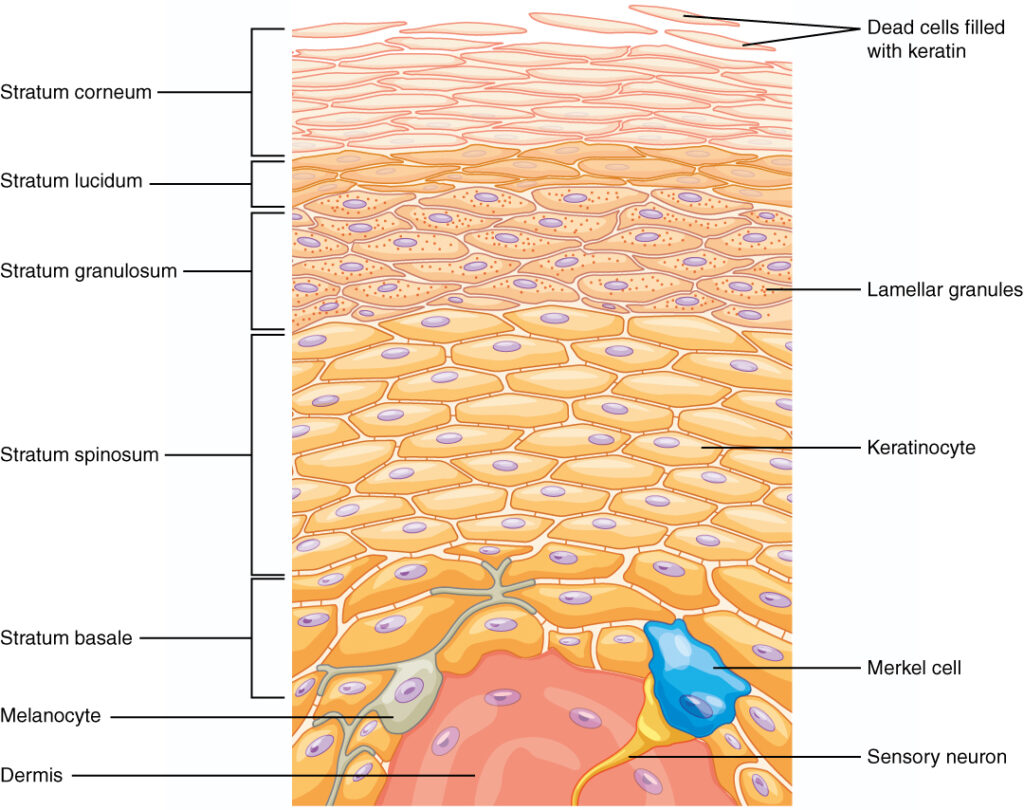
These compounds are melanoidin and are the final responsible for the fake dark colour of the skin. Melanoidin is very similar to melanin and, therefore, produces a similar colour. However, unlike melanin, melanoidin does not absorb UV radiation. It is, therefore, very important to use sun protection when using self-tanner.
This full process is very complicated, but in common words, the DHA contained in the self-tanners reacts with the proteins present in the skin and produces a compound very similar to melanin which gives a natural tan colour to the skin.
How to apply self-tanner?
It is very important to apply self-tanner in the right way. Otherwise, you will end up with patches of really dark areas whereas other areas have no colour.
If you follow these steps you will get a nice, natural and even tan on your skin.
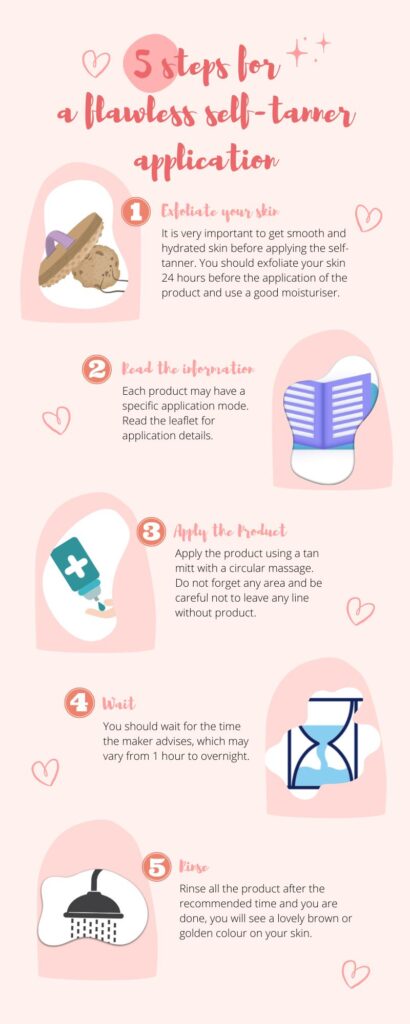
Exfoliation
It is very important to get smooth and hydrated skin before applying the self-tanner. You should exfoliate your skin 24 hours before the application of the product and use a good moisturiser. Pay special attention to the driest areas of the body such as elbows, knees and ankles.
Read carefully the information coming with the product
Each product may have a specific application mode. Some of them should stay on the skin sometime before rinsing, others have immediate effects or even they should be on the skin overnight.
Apply the product
I advise you to use a self-tanner glove to apply the product. You will get a more even application and avoid staining your hands with the excess product. I use the St Tropez Application Glove which is really soft and apply the product even and smoothly.
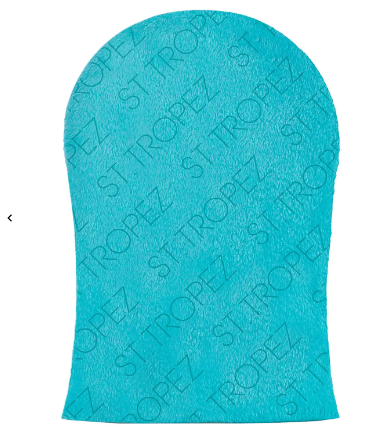
Apply the product with a circular massage. I like to start from the bottom to the top, but that really does not matter. The important point is not to forget any area and be careful not to leave any line without product.
Be extra careful with areas such as ankles, knees, elbows and armpits. I normally apply an extra amount of product to these areas and later remove the excess with a cotton pad.
The back and the neck are also complicated areas, mainly the back if you live alone. Try to get some help in this area.
Wait
Now, it is time to wait. You should wait for the time the maker advises, which, as mentioned previously, may vary from 1 hour to overnight. If the product requires overnight application, wait at least 5 minutes before wearing anything or going to bed.
Rinse the product
Rinse all the product after the recommended time and you are done, you will see a lovely brown or golden colour on your skin.
Try to keep your skin hydrated and the tone will look more natural and beautiful. If you want to keep the colour you should re-apply the product after a few days, as it is completely safe to do so.
You should never forget that despite your skin looking tanned, it is not protected against harmful UV radiation. You should wear sun protection to avoid any type of sun damage.
Pros and Cons of using self-tanner
Everything in life has two sides, including the use of self-tanners, and you should know both before using this type of product.
Pros
- They are safe for the skin
- Nowadays, you get a natural colour, similar to the tan you get through a normal tanning process
- You will get a nice colour without getting any sunburns or any skin damage as you are not exposed to the sun’s radiation.
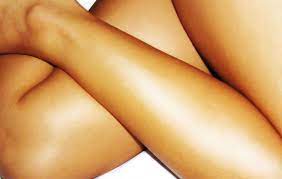
Cons
- You are not protected against UV radiation
- Your skin can become dry. If you have very dry skin you should avoid self-tanners or keep a good hydrating routine.
- Some products are not sweating or waterproof.
- If you don’t apply the product evenly you can get patches
- The tanned effect is very short and only lasts between 3 to 10 days, depending on your skin type and the product you use.
Self-tanner type
Depending on the DHA concentration
- Gradual. The DHA concentration is below 2.5%. They are mainly moisturising creams which bring some colour. If you apply it every day to the skin you can get gradual tanning which will last through all the summer if you continue using the product.
- Instant. This type of self-tanner has a higher DHA concentration, normally between 2.5 to 8%. They are ideal to get quick tanning for a special occasion. They provide quick and deep skin tanning.
Depending on the texture
- Cream. Originally, all the self-tanners were in a cream texture and even now this texture is the most popular. They normally contain moisturising agents in the formula.

- Mousse. They feel really nice on the skin and produce a luminous and even tone. Most of the mousse self-tanners contain a marker, which is a dark pigment with no effect and which will go when you rinse. This marker allows you to know the areas where you applied the product, making the application so much easier. It is better to apply this type of product with a mitt. They normally provide results between 4 and 6 hours.
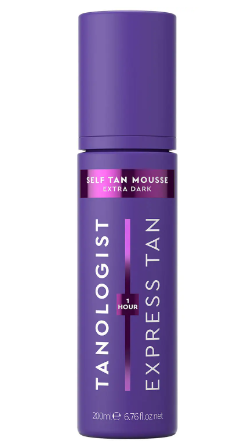
- Spray. They are very quick to apply and dry very quickly also. They are very good for the most complicated areas of the body. However, they can be really messy on the body (the application may not be even) as well as everywhere around the place where you apply.
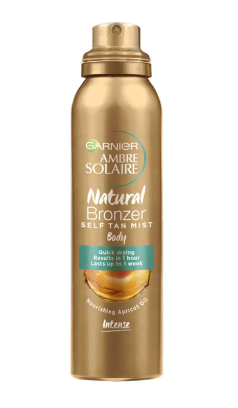
- Oil. They are moisturising products also and hydrate the skin at the same time as they tan it. This is the best type to use in sunny and warm weather places.
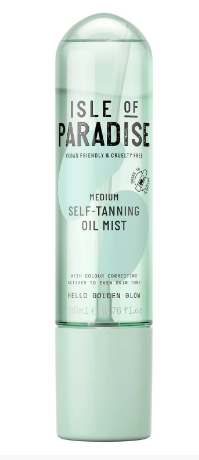
- Tanning Drops. They allow controlled stepwise tanning on the skin. The way you use them is by adding a few drops to your moisturiser and applying them every day. I love this type of self-tanners for the face.
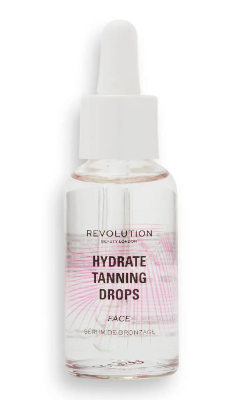
- Wipes. These are a very useful self-tanner type for small areas of the body as the face. They allow a very even application. However, they produce lots of residue and waste.

Main ingredients in self-tanner
The specific ingredients of the self-tanners will depend on the product. I always recommend reading the ingredient list for any skin product before using it for the first time as well as making a patch test. Independent of the specific formula, all the self-tanners contain the same type of ingredients:
- Emulsifier. They are normally non-ionic emulsifiers to increase DHA stability.
- Emollient. There are different compounds with emollient properties such as esters, waxes, fatty acids, mineral oils or silicones. The most popular emollients are esters and silicones like the very popular dimethicone and Cyclomethicone.
- Thickeners. Most of the thickeners are not compatible with the DHA molecule. Hydroxycellulose, methylcellulose and silica are the most common thickeners used but also xantham gum and polyquaternium-10 are compatible with DHA.
- Moisturiser. DHA needs water to produce the colour and the skin water content is not enough for that. Some agents, such as sorbitol or propylene glycol in 20% concentration are added to the formulas to provide the water needed.
- Preservatives. The self-tanner formulas must contain preservatives to avoid bacterial growth. The most common preservatives are parabens, though they are polemic ingredients.
- Sunscreens. Some self-tanners contain sunscreen compounds to protect against UV radiation. The most common sunscreens are ethyl-hexyl-methoxicine, ethyl-hexyl-salicylate, homosalate, and octocrylene among others. Physical filters such as titanium or zinc oxides may degrade DHA and it is better to avoid them in the formula.
Some products may also contain perfumes, colourants, etc. to make them more attractive. They are not necessary ingredients and I am not going to talk about them.

Other self-tanner molecules
I have been talking about DHA during all this post and you may be asking now if this is the unique molecule which produces a fake tanning effect. The answer is no, there are other substances which produce similar effects, though DHA is the most popular.
Among other molecules producing this type of effect, it is worth mentioning:
Juglone and Lawsone
They are vegetable pigments used mainly to dye the hair but can be also used on the skin. The main problem we can find using these molecules is that the colour they produce looks really fake and not similar to the natural skin tan. Juglone produces an orange tan while lawsone produces a brown-greenish colour.
Erythrulose
It is the most popular molecule used in self-tanners after the DHA. Erythrulose is a sugar veery similar to DHA (erythrulose is 1,3,4-Trihydroxybutan-2-one) and also produces Maillard Reaction. The concentration of erythrulose needed is between 0.5 to 10% and allows the simultaneous use with physical UV filters.

Mahakanni
This is a vegetal ingredient which produces the same effect as DHA. Mahakanni-STLC is a concentrated tanning liposome which contains a skin natural pigment. This pigment comes from the genetically modified plant Eclipta alba. It is very expensive and there is a debate about if using GMOs in cosmetics is ethical or not. I am not going to say anything about that, I will leave that debate to people who know more than me.
In summary, the use of self-tanners allows to show off beautiful tanned skin which looks really natural. Nowadays it is difficult to know if the tan colour is natural or fake, as the products available are high quality. They are a safe alternative to natural tan, where you need to expose your skin to harmful sun radiation to get the colour.
Do you use self-tanners? Let me know in the comments.

Bear in mind that some of the links in this post are affiliate links and if you go through them to make a purchase I will earn a commission. Keep in mind that I link these companies and their products because of their quality and not because of the commission I receive from your purchases. The decision is yours, and whether or not you decide to buy something is completely up to you.


